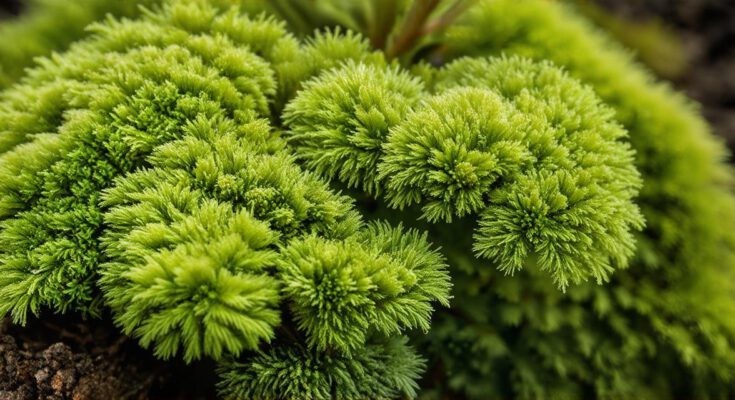Cryptogams are a diverse group of plants that lack specialized tissues for photosynthesis. These plants include mosses, liverworts, hornworts, and other non-vascular plants.
What are Cryptogams?
Cryptogams are a diverse group of plants that lack specialized tissues for photosynthesis. These plants include mosses, liverworts, hornworts, and other non-vascular plants. In contrast to vascular plants, which have specialized cells called mesophylls that contain chloroplasts, cryptogams have a more simple cell structure that lacks these specialized tissues.
Differences between Cryptogams and Other Plant Species
One of the main differences between cryptogams and other plant species is their mode of photosynthesis. While vascular plants use chloroplasts to capture light energy, cryptogams have a different type of chlorophyll called biliverdin. Biliverdin captures light energy and uses it to convert carbon dioxide into glucose through a process known as the Calvin cycle.
Another key difference between cryptogams and other plant species is their lack of specialized tissues for photosynthesis. Unlike vascular plants, which have specialized cells called mesophylls that contain chloroplasts, cryptogams have a more simple cell structure that lacks these specialized tissues.
Cryptogams also differ from other plant species in terms of their reproductive structures. While most plants reproduce through seeds, cryptogams reproduce through spores or gametes. These reproductive structures are adapted to different environments and allow cryptogams to thrive in a wide range of habitats.
Real-Life Examples of Cryptogams
Cryptogams can be found in many different environments, from the damp forests of the Pacific Northwest to the arctic tundra. One example of a cryptogram is the moss known as Physcomitrella patula, which is commonly used as an ornamental plant in gardens and landscapes. Another example is the liverwort Aegagropila linnaei, which is commonly used in traditional Chinese medicine to treat respiratory issues.
Cryptogams also play important ecological roles in their habitats. For example, they are often primary producers in wetland ecosystems, where they capture carbon dioxide from the atmosphere and convert it into organic matter through photosynthesis. This organic matter is then consumed by other organisms in the food chain, supporting a diverse range of species.
Differences between Cryptogams and Vascular Plants: A Comparison
One of the main differences between cryptogams and vascular plants is their mode of photosynthesis. While both groups use chlorophyll to capture light energy, the type of chlorophyll used differs between them. Cryptogams use biliverdin, while vascular plants use chlorophyll a and b.
Another key difference between cryptogams and vascular plants is their lack of specialized tissues for photosynthesis. While vascular plants have specialized cells called mesophylls that contain chloroplasts, cryptogams have a more simple cell structure that lacks these specialized tissues.
Cryptogams also differ from vascular plants in terms of their reproductive structures. While vascular plants reproduce through seeds, cryptogams reproduce through spores or gametes. These reproductive structures are adapted to different environments and allow cryptogams to thrive in a wide range of habitats.
How Do Cryptogams Play Ecological Roles in Their Habitats?
Cryptogams play important ecological roles in their habitats. As primary producers in wetland ecosystems, they capture carbon dioxide from the atmosphere and convert it into organic matter through photosynthesis. This organic matter is then consumed by other organisms in the food chain, supporting a diverse range of species. Cryptogams also play important roles in soil formation, nutrient cycling, and water retention.
Conclusion: Understanding Cryptogams and Their Differences from Other Plant Species
Cryptogams are an important part of many ecosystems, playing key roles in capturing carbon dioxide from the atmosphere and supporting a diverse range of species. By understanding their differences from other plant species, we can better appreciate the unique adaptations that allow them to thrive in different environments. Whether you’re interested in gardening, ecology, or traditional medicine, learning more about cryptogams is sure to be an enlightening experience.



